

Frank Lloyd Wright
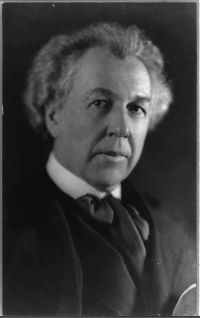
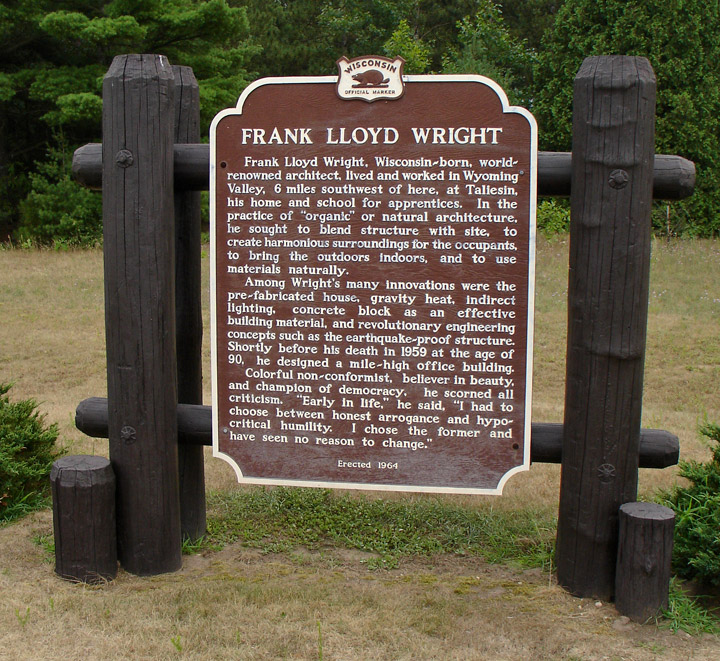
Frank Lloyd Wright (June 8, 1867 –
April 9, 1959) was one of the world's most prominent and influential architects.s.
He developed a series of highly individual styles over his extraordinarily long
architectural career (spanning the years 1887–1959) and he influenced the entire
course of American architecture and building. To this day, he remains America's
most famous architect.
Wright was also well known in his lifetime. His colorful personal life
frequently made headlines, most notably for the failure of his first two
marriages and for the 1914 fire and murders at his Taliesin studio.
Early years
Frank Lloyd Wright was born in the agricultural town of Richland Center, Wisconsin, United States, on June 8, 1867, of Welsh descent just two years after the end of the American Civil War. As a child he spent a great deal of time playing with the kindergarten educational blocks by Friedrich Wilhelm August Froebel (known as Froebel Gifts) given to him by his mother, Anna Lloyd Jones. These consisted of various geometrically shaped blocks that could be assembled in various combinations to form three-dimensional compositions. Wright in his autobiography talks about the influence of these exercises on his approach to design. Many of his buildings are notable for the geometrical clarity they exhibit.

A. D. German Warehouse
his only commission in Richland Center
More Photos of the A. D. German Warehouse
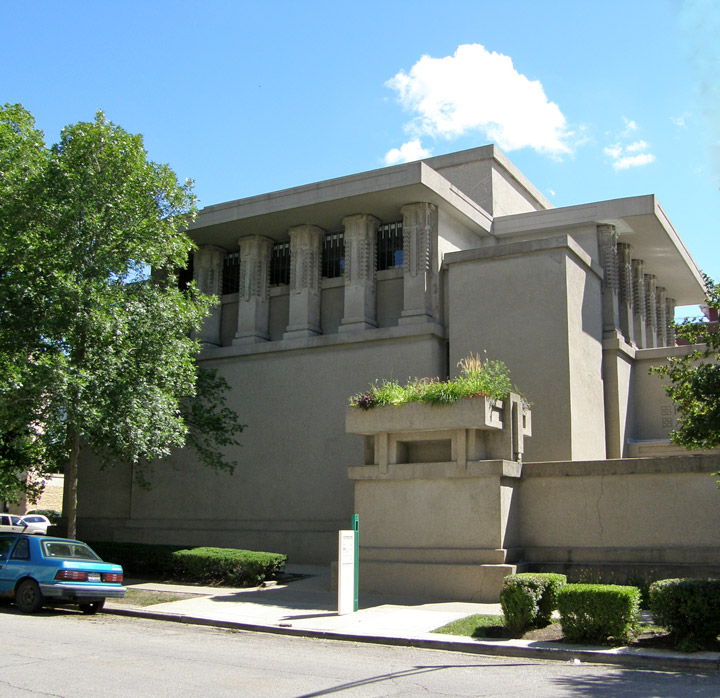
Unity Templele
Wright began his formal education in 1885 at the University of Wisconsin-Madison College of Engineering, where he was a member of Phi Delta Theta Fraternity International, Inc. Wisconsin Alpha chapter. He took classes part-time for three semesters, while apprenticing under a local builder and professor of civil engineering. In 1887, Wright left the university without taking a degree (although he was granted an honorary doctorate of fine arts from the university in 1955) and moved to Chicago, Illinois, where he joined the architectural firm of Joseph Lyman Silsbee. Within the year, he had left Silsbee to work for the firm of Adler & Sullivan.
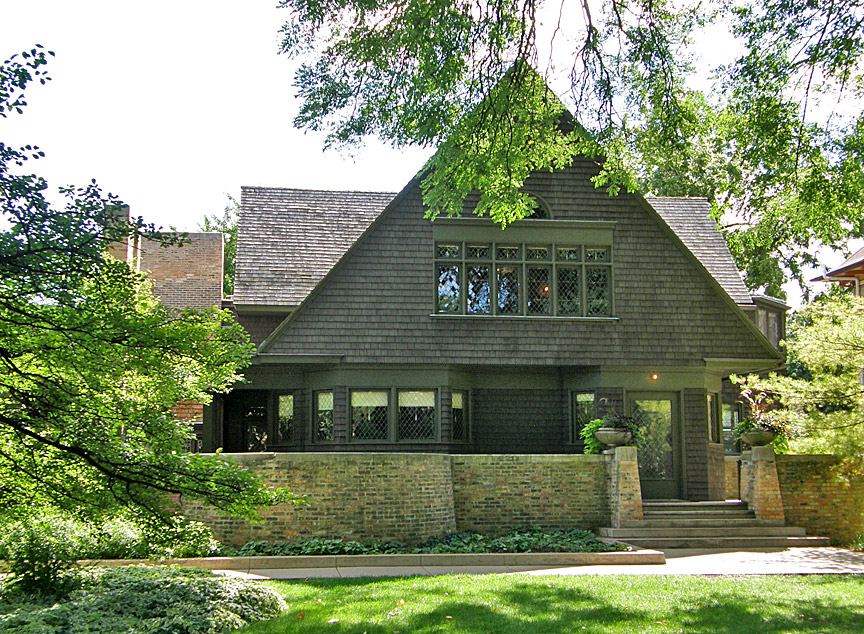
Wright's first home
In 1889, he married his first wife, Catherine Lee "Kitty" Tobin, purchased land in Oak Park, IL and built his first home, and eventually his studio there. His marriage to Kitty Tobin, the daughter of a wealthy businessman, raised his social status, and he became more well-known.
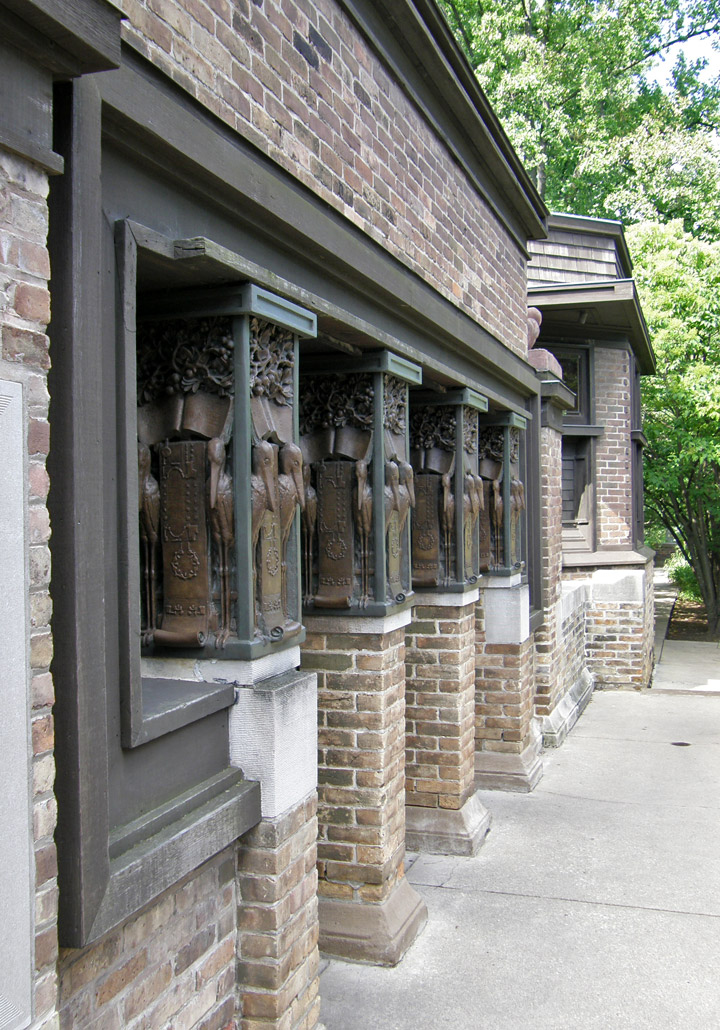
Wright's Studio
More Photos of Frank Lloyd Wright in Oak Park, Illinois
Beginning in 1890, he was assigned all residential design work for the firm. In 1893, Louis Sullivan himself unwillingly asked Wright to leave the firm after he discovered that Wright had been accepting clients independently from the firm (moonlighting). Wright established his own practice and home in the Chicago suburb of Oak Park, IL. By 1901, Wright's completed projects numbered approximately fifty, including many houses in his hometown.
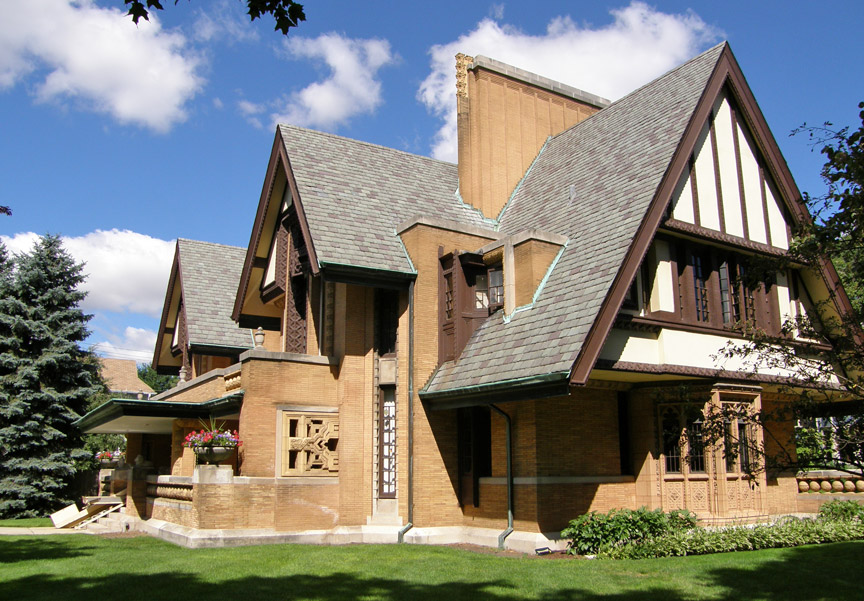
Nathan G. Moore House
1895/1923
333 Forest Avenue, Oak Park, Illinois
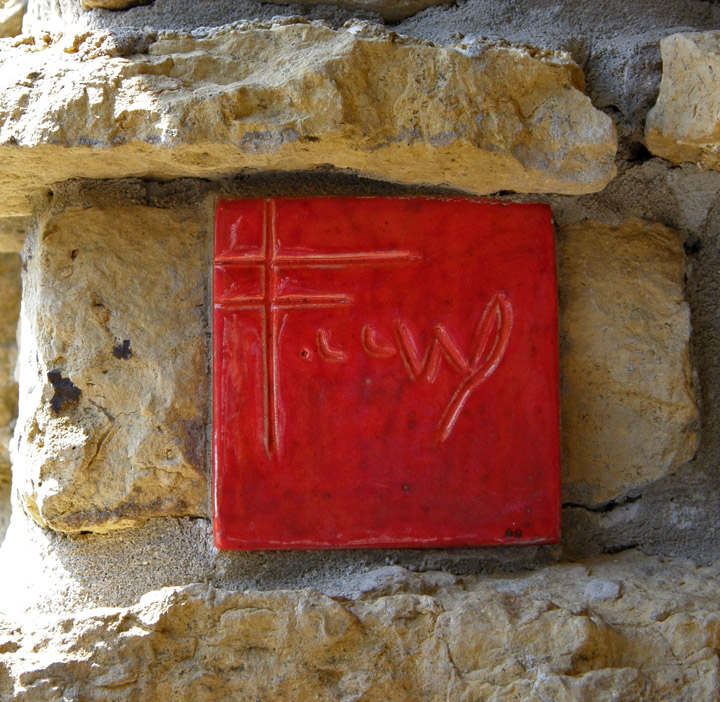
The Frank Lloyd Wright seal of
approvalal
for a completed building
Prairie House
Between 1900 and 1917, his residential designs were "Prairie Houses" (extended low buildings with shallow, sloping roofs, clean sky lines, suppressed chimneys, overhangs and terraces, using unfinished materials), so-called because the design is considered to complement the land around Chicago. These houses are credited with being the first examples of the "open plan."
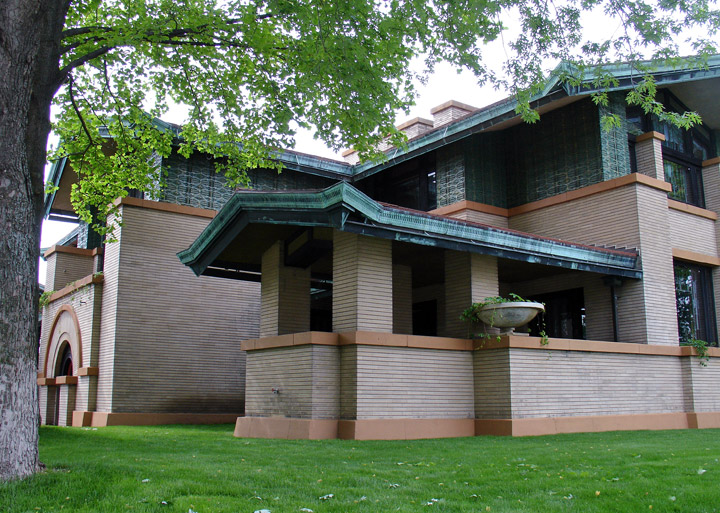
Dana-Thomas House
Designs for the House were executed
between 1902 and early 1903.
Construction began in the late summer of 1902, and the house completed
before Christmas 1904
More Photos of the Dana-Thomas House
In fact, the manipulation of interior space in residential and public buildings, such as the Unitarian Unity Temple, in Oak Park, are hallmarks of his style. He believed that humanity should be central to all design. Many examples of this work can be found in Buffalo, New York, resulting from a friendship between Wright and an executive from the Larkin Soap Company, Darwin D. Martin. In 1902 the Larkin Company decided to build a new administration building.
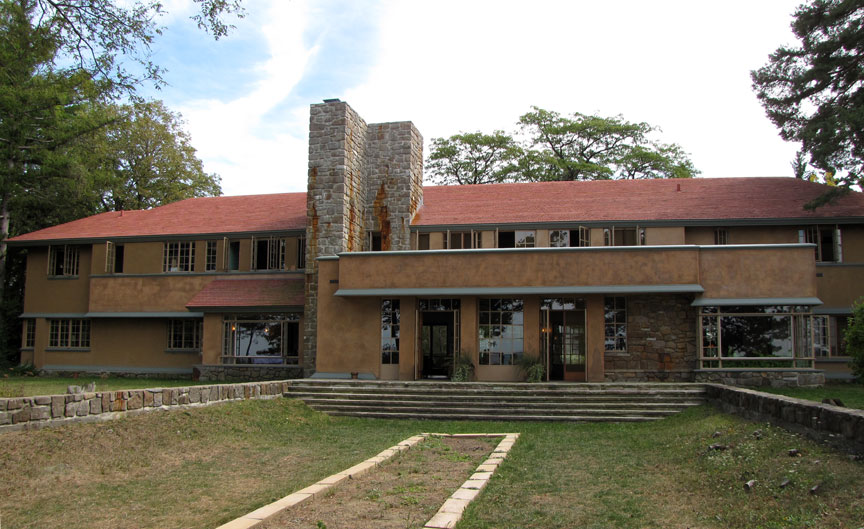
In Buffalo, a lakeside building, the Isabelle R. Martin House, Graycliff
Darwin Martin House George F. Barton House
Wright came to Buffalo and designed not only the first sketches for the Larkin Administration Building (completed in 1904, demolished in 1950), but also homes for three of the company's executives:
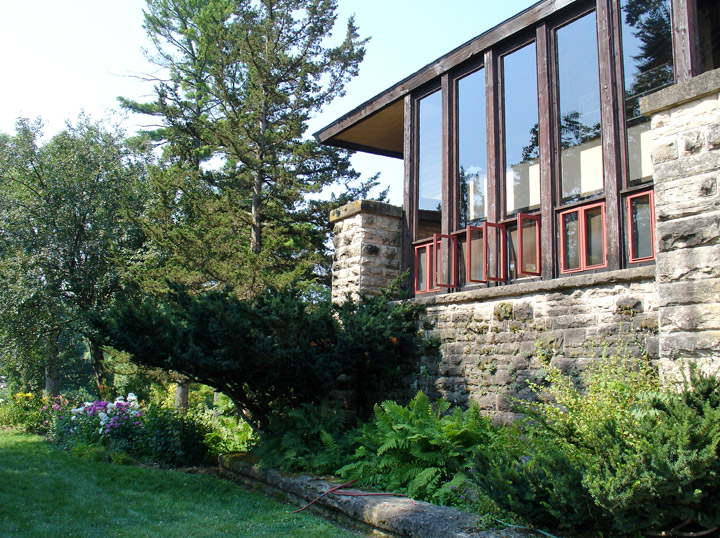
Hillside Home School, 1902, Taliesin, Spring Green, Wisconsin
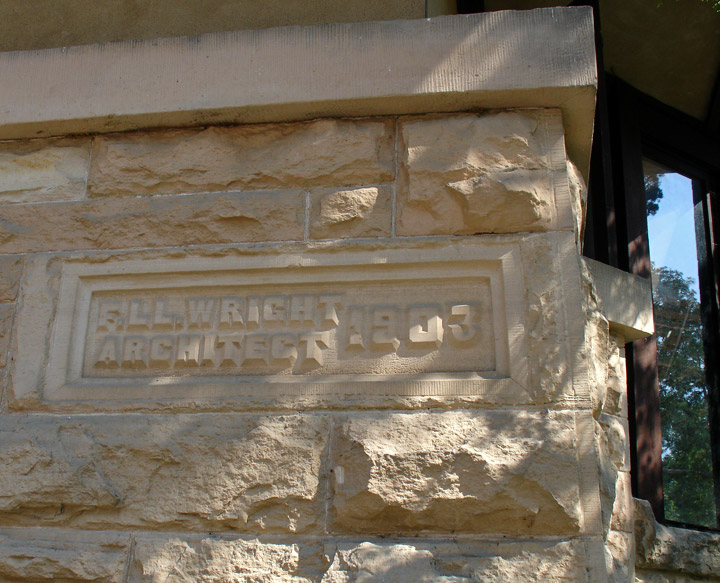
More Photos of Hillside
Home School
The houses considered the masterpieces of the late Prairie Period (1907–1909) are the Frederick Robie House in Chicago and the Avery and Queene Coonley House in Riverside. The Robie House, with its soaring, cantilevered roof lines, supported by a 110-foot-long channel of steel, is the most dramatic. Its living and dining areas form virtually one uninterrupted space. This building had a profound influence on young European architects after World War I and is sometimes called the "cornerstone of modernism." Wright's work, however, was not known to European architects until the publication of the Wasmuth Portfolio in 1910.
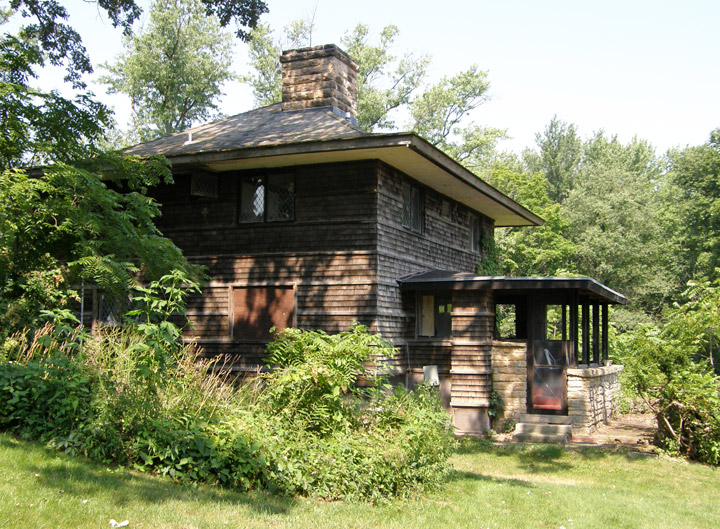
Tan-y-Deri
built for his sister on the Spring Green, Wisconsin family lands
Europe and personal troubles
In 1904, Wright designed a house for
Edwin Cheney, a neighbor in Oak Park, and immediately took a liking to Cheney's
wife, Mamah Borthwick Cheney. The two fell in love, even though Wright had been
married for over a decade. Often the two could be seen taking rides in Wright's
automobile through Oak Park, and they became the talk of the town. Wright's
wife, Kitty, would not grant him a divorce however, and at first, neither would
Edwin Cheney grant one to Mamah. In 1909, even before the Robie House was
actually completed, Wright and Mamah Cheney eloped to Europe. The scandal that
erupted virtually destroyed Wright's ability to practice architecture in the
United States.
Architectural historians have speculated on why Wright decided to turn his life
upside-down. Scholars argue that he felt by 1907-8 that he had done every thing
he could do with the Prairie Style, particularly from the standpoint of the
one-family house. Wright was not getting larger commissions for commercial or
public buildings, which frustrated him as it would any highly skilled architect.
Wright and Mamah Cheney traveled extensively throughout Europe. In 1910, during
a stop in Berlin, Wright, with virtually all of his drawings, visited the
publishing house of Ernst Wasmuth, who had agreed to publish his work there. In
two volumes, the Wasmuth Portfolio was thus published, and created the first
major exposure of Wright's work in Europe. The later Bauhaus movement's founders
claimed to have been inspired by these books.
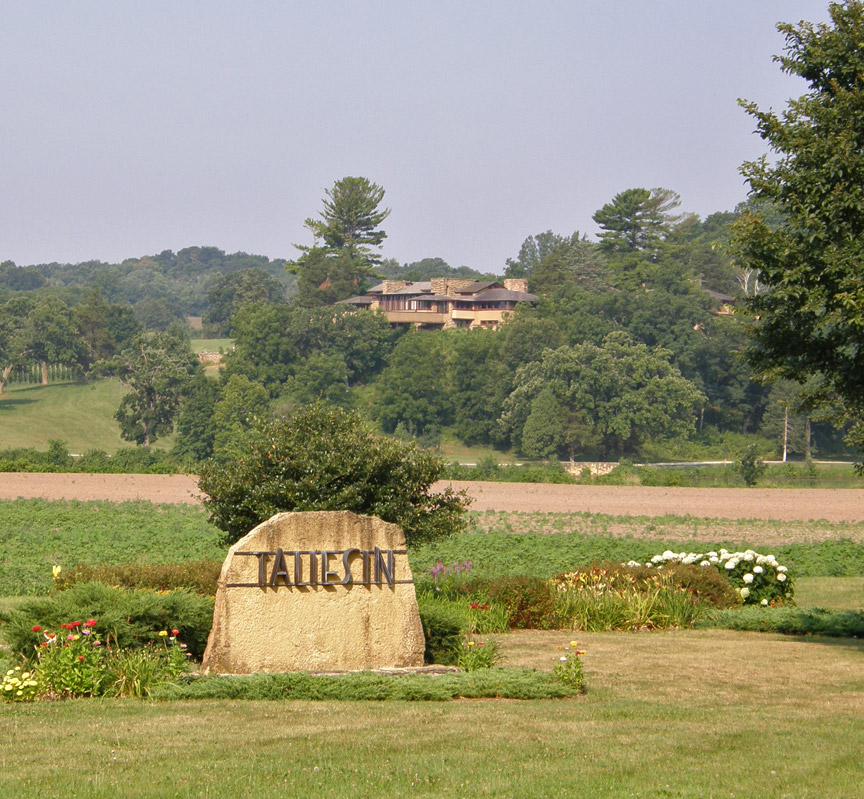
Taliesin
Wright remained in Europe for one year (though Mamah Cheney returned to the United States a few times) and set up home in Fiesole, Italy. During this time, Edwin Cheney granted her a divorce, though Catherine Wright again refused to grant one to her husband. After Wright's return to the United States in late 1910, Wright persuaded his mother to purchase land for him in Spring Green, Wisconsin. The land, purchased on April 10, 1911, was adjacent to land held by his mother's family, the Lloyd-Joneses. Wright began to build himself a new home, which he called Taliesin, by May of 1911.

Taliesin, Frank Lloyd Wright's home
American System-Built Homes on West Burnham Street, Milwaukee, Wisconsin.
2714 W. Burnham Street (Model B1)
2724 - 2726 W. Burnham Street (Model 7A)
The house at 2714 W. Burnham Street is one of six dwellings in that block that Wright designed as part of an intended national line of pre-cut houses that Wright called "American System-Built." The concentration of Wright homes on Burnham Street is unique among Wright's surviving works. The materials were pre-cut in a factory, then assembled on-site.
the residence between the above two
More personal turmoil
On August 15, 1914, while Wright was
in Chicago completing a large project, Midway Gardens, Julian Carlton, a male
servant whom he had hired several months earlier, set fire to the living
quarters of Taliesin and murdered seven people with an axe as the fire burned.
The dead were: Mamah; her two children, John and Martha; a gardener; a
draftsman; a workman; and the workman’s son. Two people survived the mayhem, one
of whom helped to put out the fire that almost completely consumed the
residential wing of the house.

Arizona Biltmore Hotel
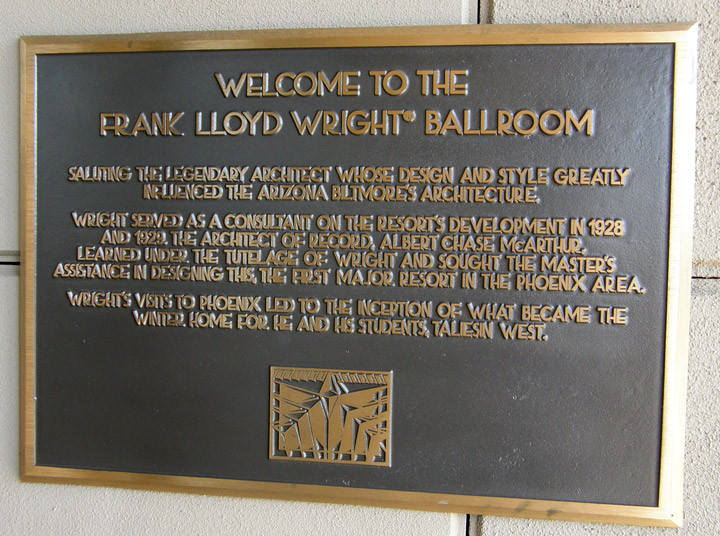
More Photos of the Biltmore Hotel
In 1922, Wright's first wife granted him a divorce, and the architect was
required to wait for one year until he married his then-partner, Maude "Miriam"
Noel. In 1923, Wright's mother, Anna (Lloyd Jones) Wright, died. Wright wed
Miriam Noel in November 1923, but her addiction to morphine led to the failure
of the marriage in less than one year. In 1924, after the separation, but while
still married, Wright met Olga (Olgivanna) Lazovich Hinzenburg, at a Petrograd
Ballet performance in Chicago. They moved in together at Taliesin in 1925,
followed soon after by Olgivanna's pregnancy with their daughter, Iovanna (born
December 2, 1925).
On April 22, 1925, another fire destroyed the living quarters of Taliesin. This
appears to have been the result of a faulty electrical system. Wright rebuilt
the living quarters again, naming the home "Taliesin III".
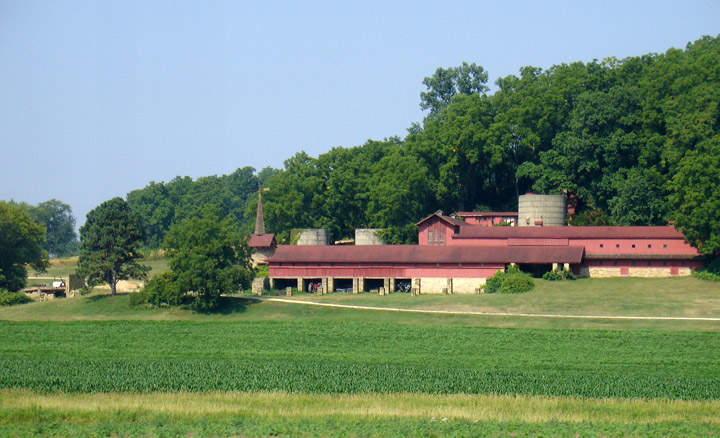
Midway Farm
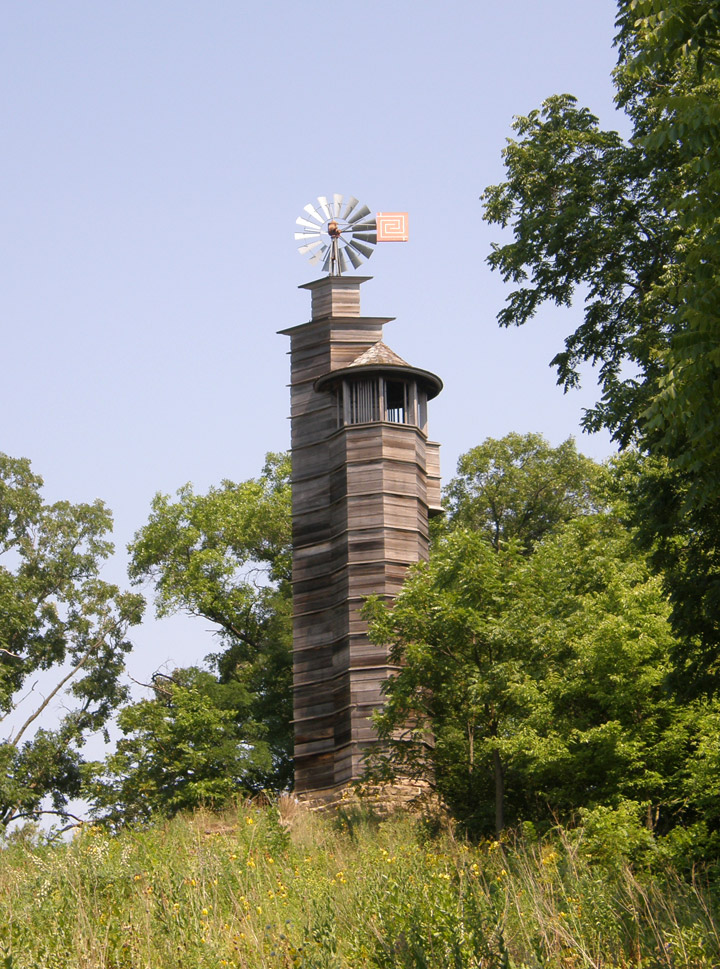
Romeo and Juliet water tower
Other photos of the Taliesin Estate
In 1926, Olga's ex-husband, Vlademar Hinzenburg, sought custody of his daughter, Svetlana. In Minnetonka, Minnesota, Wright and Olgivanna were accused of violating the Mann Act and arrested in October 1926 (the charges were later dropped).
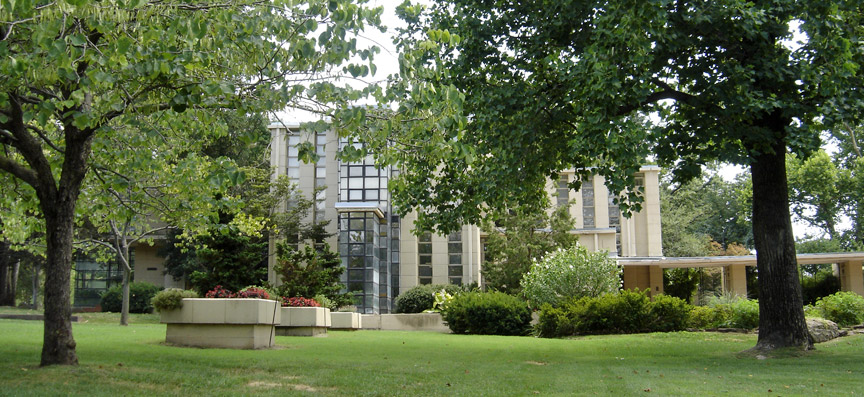
Westhope
1929 - Tulsa. Oklahoma
Wright and Miriam Noel's divorce was finalized in 1927, and once again, Wright was required to wait for one year until marrying again. Wright and Olgivanna married in 1928.
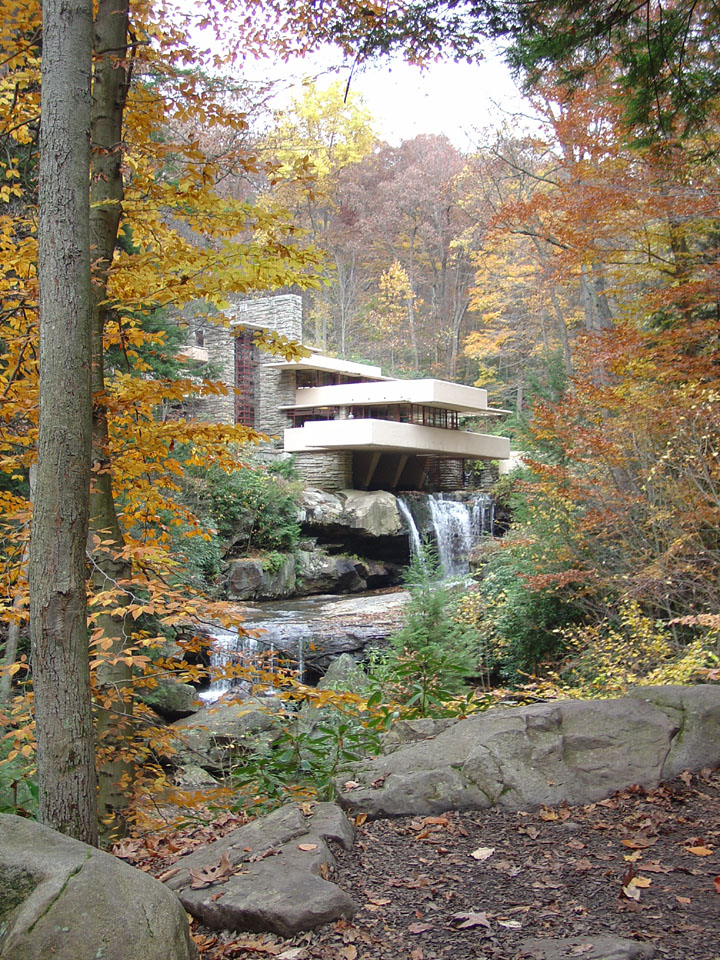
Fallingwater is one of the most famous of Frank Lloyd Wright's
works
During the turbulent 1920's, Wright designed Graycliff, one of his most innovative residences of the period, and a precursor to Fallingwater. The Graycliff estate was constructed from 1926 to 1929 for Isabelle and Darwin Martin on a bluff overlooking Lake Erie, just south of Buffalo, NY. A complex of three buildings and extensive grounds all designed by Wright, Graycliff incorporates cantilevered balconies and terraces, "ribbons" of windows, and a transparent "screen" of windows allowing views of the lake through the Isabelle R. Martin House, Graycliff's largest building. Constructed of limestone from the beach below, warm ochre-colored stucco and striking red-stained roofs, Graycliff's light-filled buildings were designed in Wright's "organic" style. Wright's designs for Graycliff's grounds incorporate water features that echo the lake beyond...a pond, a fountain, sunken gardens and stone walls in a "waterfall" pattern that surround the property. On the summer solstice, Graycliff is aligned with the setting sun on Lake Erie, as Wright intended.
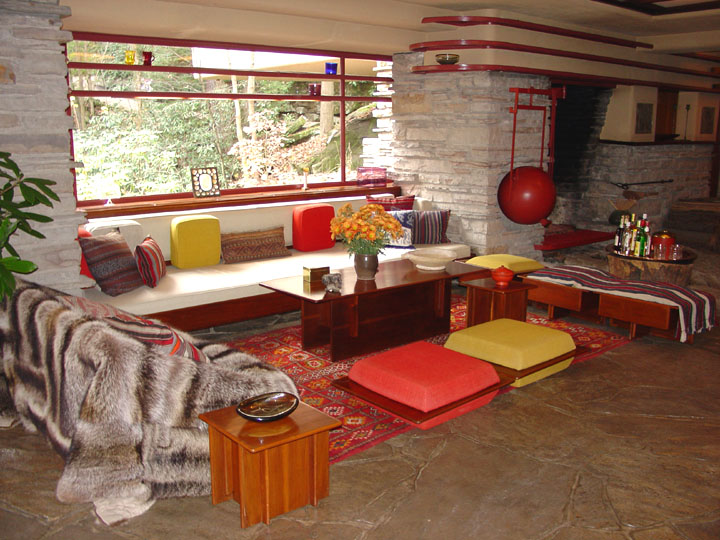
interior of Fallingwater
His most famous private residence was constructed from 1935 to 1939—Fallingwater—for Mr. and Mrs. E.J. Kaufmann Sr., at Bear Run, Pennsylvania near Pittsburgh. It was designed according to Wright's desire to place the occupants close to the natural surroundings, with a stream and waterfall running under part of the building. The construction is a series of cantilevered balconies and terraces, using limestone for all verticals and concrete for the horizontals. The house cost $155,000, including the architect's fee of $8,000. Kaufmann's own engineers argued that the design was not sound. They were overruled by Wright, but the contractor secretly added extra steel to the horizontal concrete elements. In 1994, Robert Silman and Associates examined the building and developed a plan to restore the structure. In the late 1990s, steel supports were added under the lowest cantilever until a detailed structural analysis could be done. In March 2002, post-tensioning of the lowest terrace was completed.
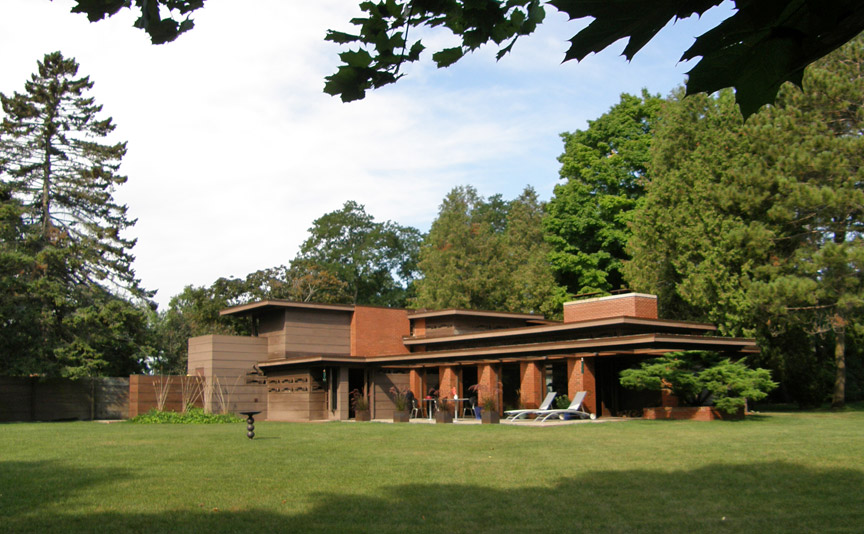
Bernard Schwartz house (1939), Two Rivers, Wisconsin
More Photos of the Schwartz house
It was also in the 1930s that Wright first designed "Usonian" houses. Intended to be highly practical houses for middle-class clients, the designs were based on a simple, yet elegant geometry.
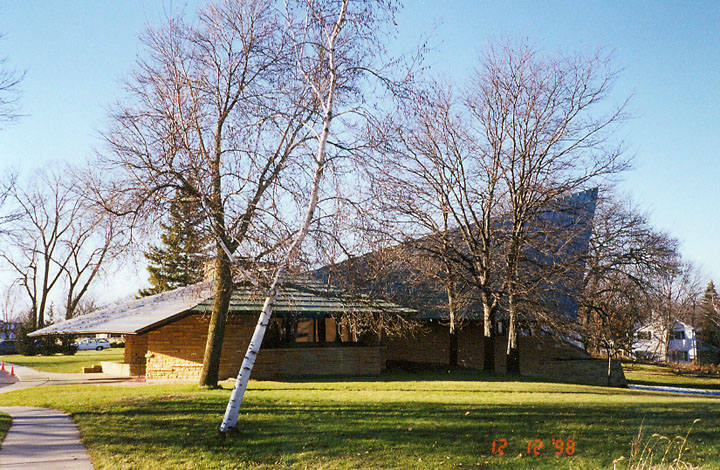
First Unitarian Society Meeting House, Madison, Wisconsin
More Photos of First Unitarian Society Meeting House
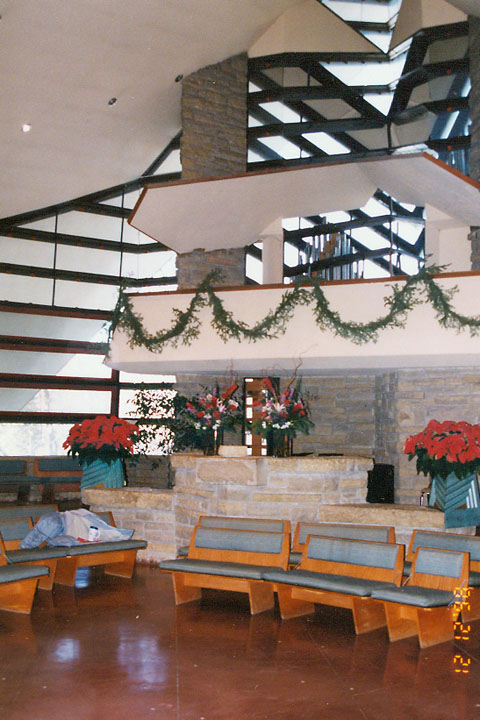
interior
He would later use similar elementary forms in his First Unitarian Meeting House built in Madison, Wisconsin, between 1946 and 1951.
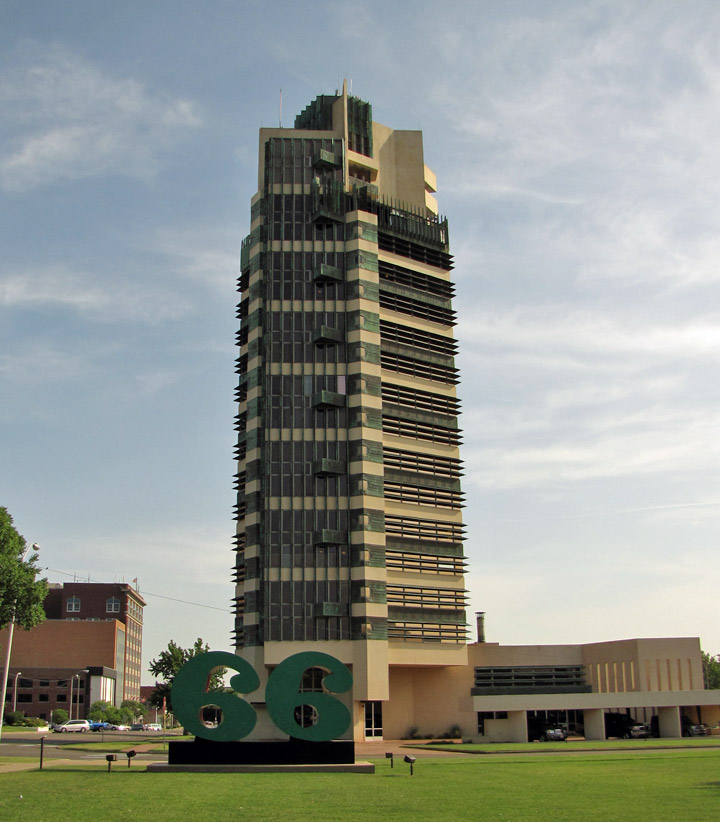
Frank Lloyd Wright designed
high-rise apartments in Bartlesville, Oklahoma
1952 -1956
Wright is responsible for a concept or a series of extremely original concepts of suburban development united under the term Broadacre City. He proposed the idea in his book The Disappearing City in 1932, and unveiled a very large (12 by 12 ft) model of this community of the future, showing it in several venues in the following years. He went on developing the idea until his death.
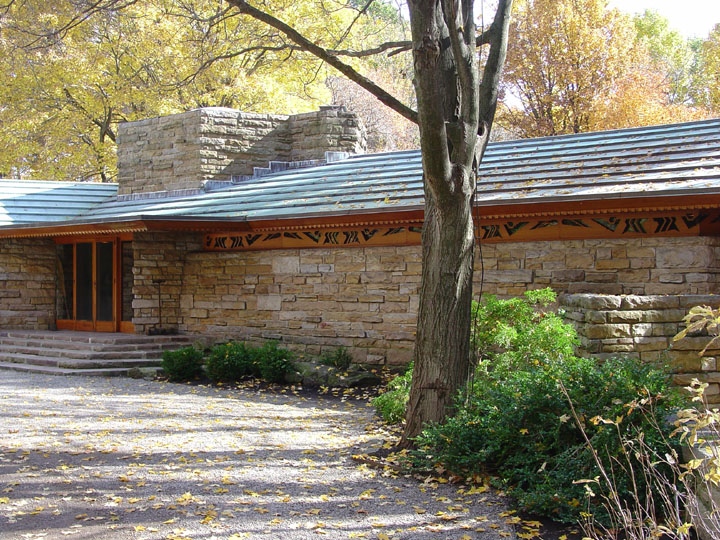
Kentuck Nob, a Usonian home, of the mid 50's
located in the Laurel Highlands of Western Pennsylvania
His 'Usonian' homes set a new style for suburban design that was followed by countless developers. Many features of modern American homes date back to Wright; open plans, slab-on-grade foundations, and simplified construction techniques that allowed more mechanization or at least efficiency in building are amongst his innovations.
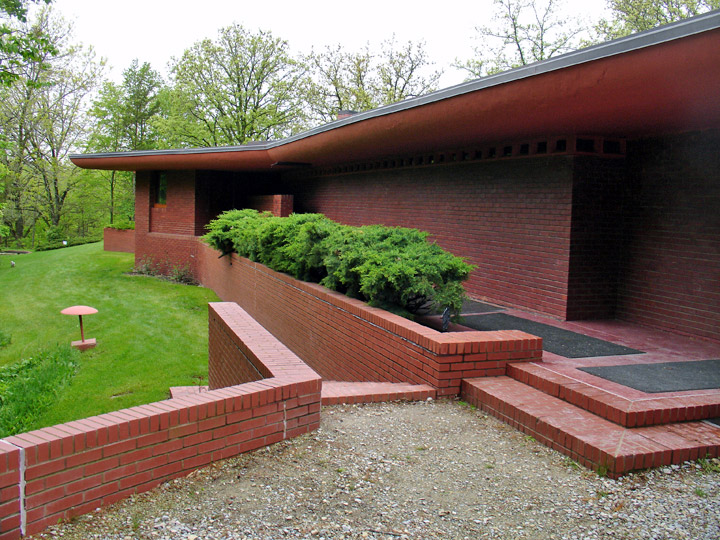
Cedar Rock was begun in 1948 and completed in 1950
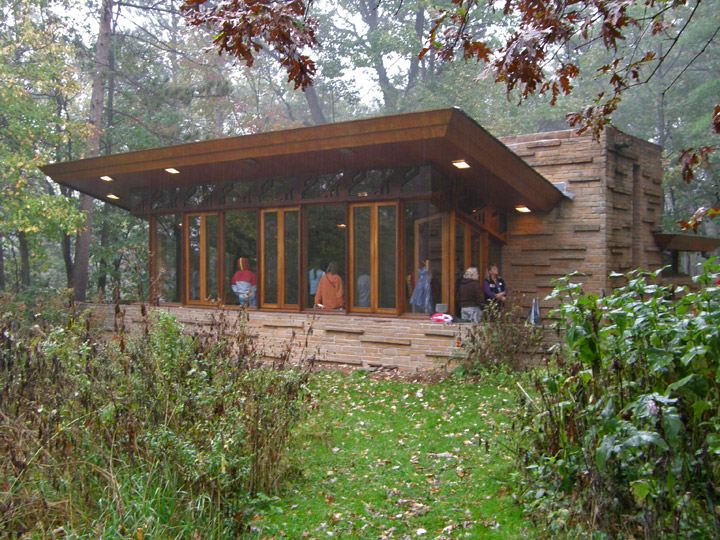
Seth Peterson Cottage (1958)
More Photos of Seth Peterson Cottage

Solomon R. Guggenheim Museum
More Photos of the Solomon R. Guggenheim Museum
The Solomon R. Guggenheim Museum in
New York City is a building that occupied Wright for 16 years (1943 - 59)
and is probably his most recognized masterpiece. The building rises as a warm
beige spiral from its site on Fifth Avenue; its interior is similar to the
inside of a seashell. Its unique central geometry was meant to allow visitors to
experience Guggenheim's collection of nonobjective geometric paintings with ease
by taking an elevator to the top level and then viewing artworks by walking down
the slowly descending, central spiral ramp, which features a floor embedded with
circular shapes and triangular light fixtures, in order to complement the
geometric nature of the structure. Unfortunately, when the museum was completed,
a number of important details of Wright's design were ignored, including his
desire for the interior to be painted off-white. Furthermore, the Museum
currently designs exhibits to be viewed by walking up the curved walkway rather
than walking down from the top level.
Other Projects
Wright built 362 houses. About 300 survive as of 2005. Three have
been lost to forces of nature: the waterfront house for W. L. Fuller in Pass
Christian, Mississippi, which was destroyed by Hurricane Camille in August 1969,
the Louis Sullivan Bungalow of Ocean Springs, Mississippi, which was destroyed
by Hurricane Katrina in 2005, and the James Charnley Bungalow of Ocean Springs,
Mississippi, which was also gutted by Hurricane Katrina in 2005. The Ennis House
in California has also been damaged by earthquake and rain-induced ground
movement. In January, 2006, the Wynant House in Gary, Indiana was gutted by
fire.
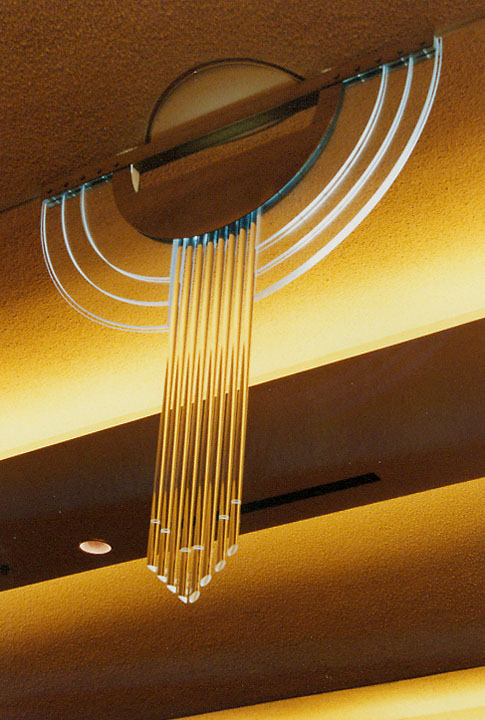
Monona Terrace,
newly constructed, based on Frank Lloyd Wright
designs
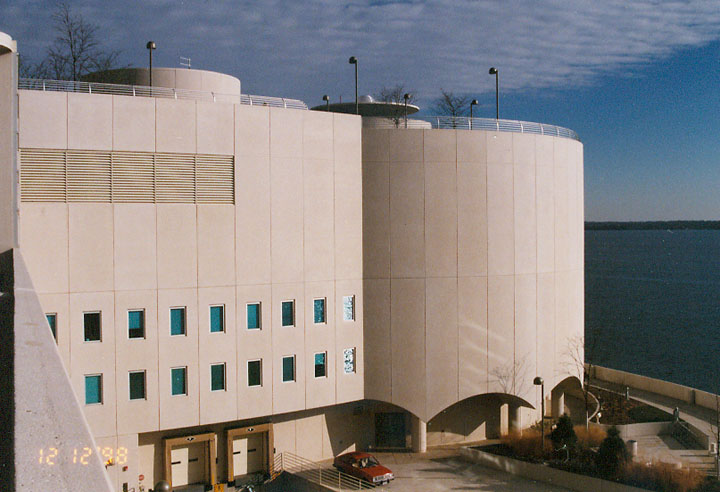
on the Lake Monona shoreline
One of his projects, Monona Terrace, originally designed in 1937 as City and County Offices for Madison, Wisconsin, was completed in 1997 on the original site, using a variation of Wright's final design for the exterior with the interior design altered by its new purpose as a convention center. The "as-built" design was carried out by Wright's apprentice Tony Puttnam. Monona Terrace was accompanied by controversy throughout the sixty years between the original design and the completion of the structure.

Administration building and the
Research and Development tower
for Johnson Wax in Racine, Wisconsin
More Photos of the Johnson Wax buildings
A lesser known project that never came to fruition was Wright's plan for Emerald
Bay, Lake Tahoe. Few Tahoe locals are even aware of the iconic American
architect's plan for their natural treasure.
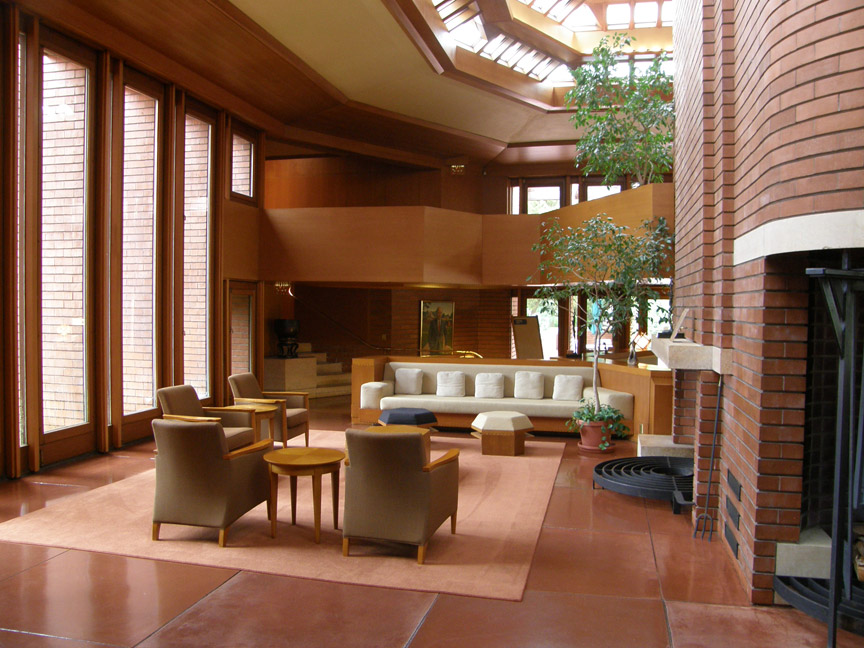

Wingspread, the Herbert Fisk Johnson, Jr. residence
Wright also built several houses in the Los Angeles area, currently open to the
public are the Hollyhock House (Aline Barnsdall Residence) in Hollywood and the
shops at Anderton Court in Beverly Hills.
Following the Hollyhock House, Wright used an innovative building process in
1923 and 1924, which he called "textile block system" where buildings were
constructed with precast concrete blocks with a patterned, squarish exterior
surface: The Alice Millard House (Pasadena), the John Storer House (West
Hollywood), the Samuel Freeman House (Hollywood) and the Ennis House in the
Griffith Park area of Los Angeles. During the past two decades the Ennis House
has become popular as an exotic, nearby shooting location to Hollywood TV and
movie makers. He also designed a fifth textile block house for Aline Barnsdall,
the Community Playhouse ("Little Dipper"), which was never constructed. Frank
Lloyd Wright's son, Lloyd Wright, supervised construction for the Storer,
Freeman and Ennis House.
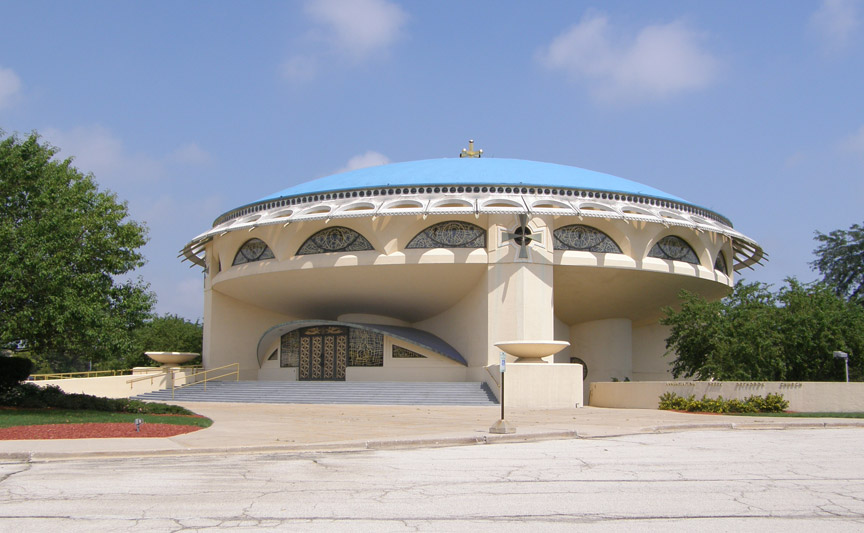
Greek Orthodox Church in Milwaukee
More Photos of the Greek Orthodox Church
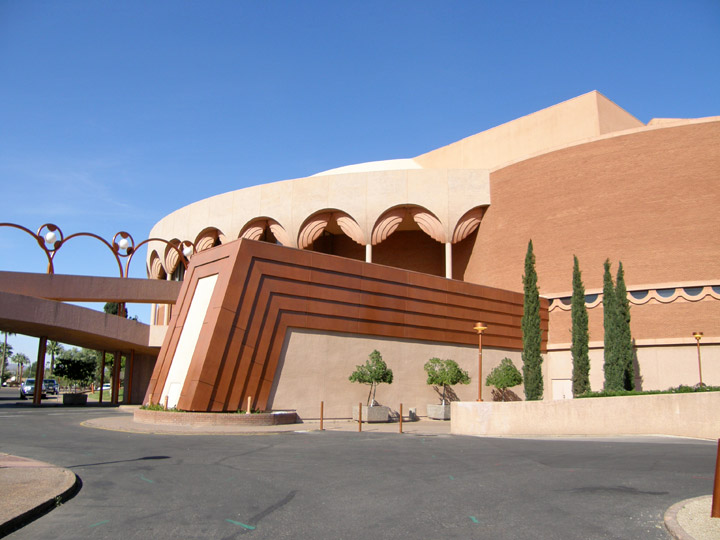
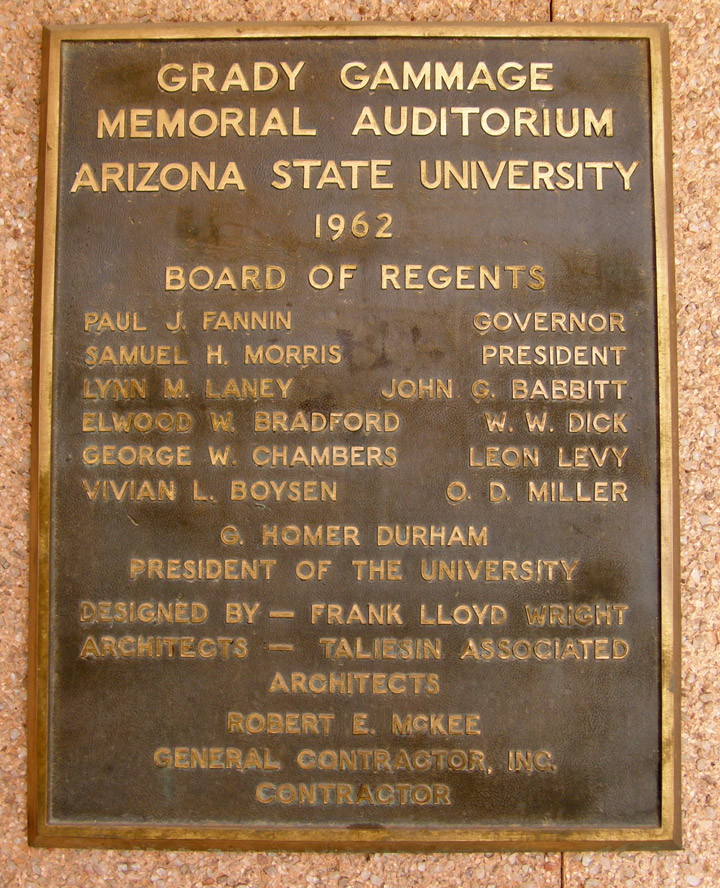
Most of these houses are private residences and/or are closed to the public
because of renovation, including the Sturgis House (Brentwood) and the Arch
Oboler Gatehouse & Studio (Malibu).
Oak Park, Illinois, a Chicago suburb, has the largest collection of Wright
houses, as well as Wright's home and studio, which are open for public tours.
Tours of certain homes occur during the year. The Unity Temple is located on
Lake Street in Oak Park. The Cheney House, Edwin and Mamah Cheney's residence,
has been a bed and breakfast for many years. Beside the home's beauty, it
contains a stunning in-law suite on the lower level.
Florida Southern College, located in Lakeland, Florida constructed 12 (out of 18
planned) Frank Lloyd Wright buildings between 1941 and 1958.
Death and legacy
Turmoil followed Wright even many years after his death on April 9, 1959. His third wife, Olgivanna continued to run the Fellowship after Wright's death, until her own death in Scottsdale, Arizona in 1985. In 1985, following the death of Olgivanna, it was learned that her dying wish had been that Wright, her daughter by a first marriage and herself all be cremated and relocated to Scottsdale, Arizona.
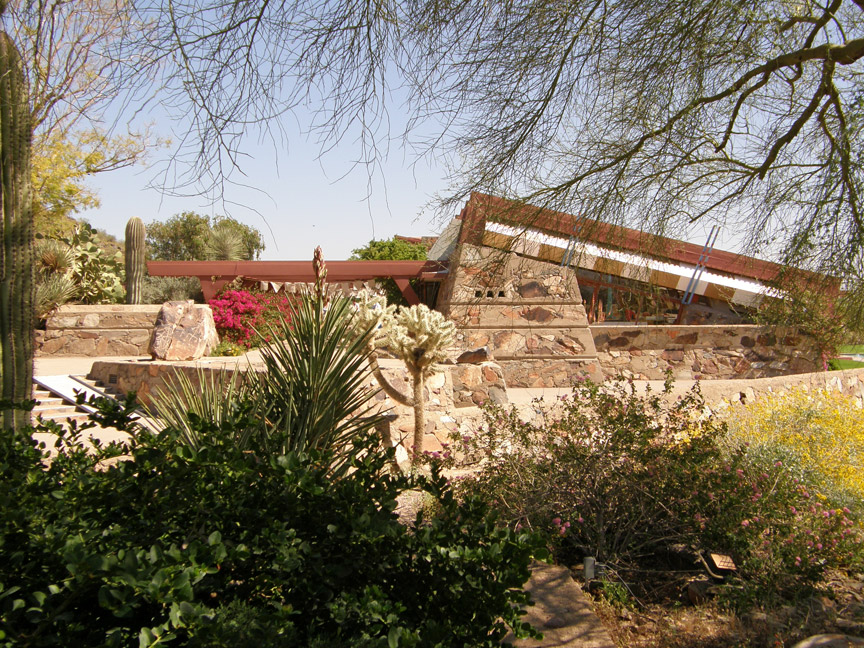
Taliesin West
Photos of other Taliesin West buildings
During the nearly 30-year period prior to Olgivanna's death, Wright's body had lain interred in the Lloyd-Jones cemetery, next to the Unity Chapel, near Taliesin, Wright's later-life home in Spring Green, Wisconsin. (The Unity Chapel, designed by Joseph Silsbee, should not be confused with the much larger and vastly more famous Unity Temple, designed by Wright and located in Oak Park, IL. Wright was the draughtsman for the design of the Unity Chapel.)

Unity Chapel
Olgivanna's plan to exhume her late-husband and cremate him, her daughter and herself called for a memorial garden, already in the works, to be finished and prepared for their remains. Despite the fact that the garden had yet to be finished, his remains were prepared and sent to Scottsdale where they waited in storage for an unidentified amount of time before being interred in the memorial area. According to Frank Henry, the combined ashes later were scattered over the site. Today, anyone who visits the small cemetery south of Spring Green, Wisconsin and a long stone's throw from Taliesin to look upon a gravestone marked with Wright's name will be visiting an empty grave.
Text from Wikipedia
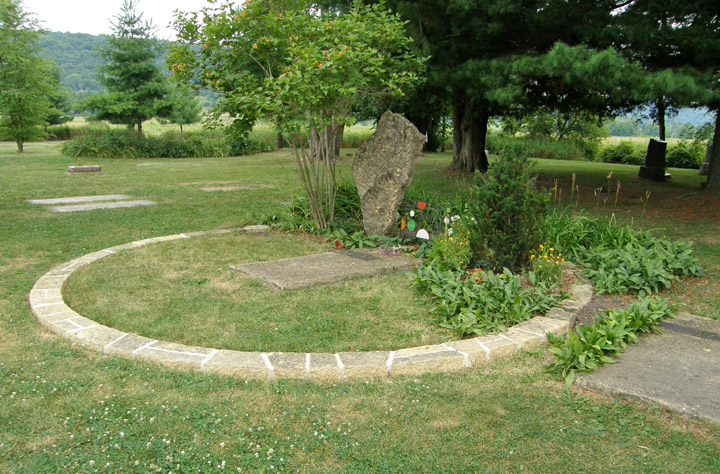
the empty grave
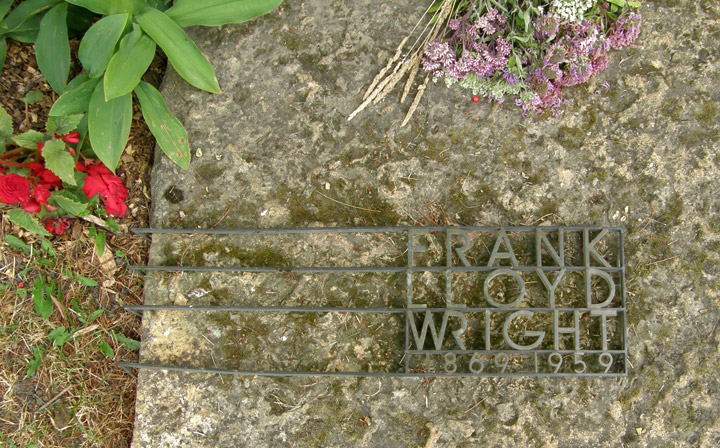

Happy Birthday
Frank Lloyd Wright
150th on June 8,2017
Party at the Wade House, Greenbush Wisconsin
At the dedication of a Carriage used by Frank Lloyd Wright